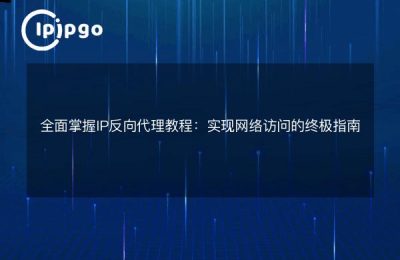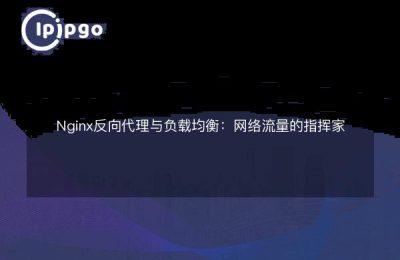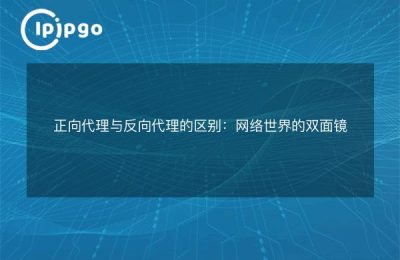I'm happy to share some knowledge about nginx reverse proxy with you, today I would like to talk about how to use nginx reverse proxy to handle ip address. As an ops engineer who likes to toss and turn, I am well aware of the importance of nginx reverse proxy in website architecture, which can not only realize load balancing, but also play a role in hiding the real server ip.
What is nginx reverse proxy?
First, let's understand what nginx reverse proxy is. Usually, we deploy servers with forward proxying, which means that the client sends a request to the server, which in turn sends the request to the target server and finally returns the result to the client. Reverse proxy, on the other hand, means that the client sends a request to the server, the server forwards the request to the real server in the backend, and sends the returned result to the client again. The advantage of this is that the client cannot directly access the real back-end server, which improves the security of the system.
Use nginx reverse proxy to hide real ip
Next, let's see how to use nginx reverse proxy to hide the real server ip. suppose we have a backend server with ip address 192.168.1.100 and port 8080, and we want to access this server through nginx proxy. First of all, we need to configure this in the nginx configuration file.
server {
listen 80; server_name example.com; server_name
server_name example.com;
location / {
proxy_pass http://192.168.1.100:8080; proxy_set_header
proxy_set_header Host $host; proxy_set_header X-Real-IP $remote_addr; proxy_set_header
proxy_set_header X-Real-IP $remote_addr; proxy_set_header X-Forwarded-For $proxy_addr
proxy_set_header X-Forwarded-For $proxy_add_x_forwarded_for;
}
}In the above configuration, we specify the address and port of the backend server through proxy_pass, and then set some http request headers through proxy_set_header, among which X-Real-IP and X-Forwarded-For are used to pass the real client ip. After this configuration, when the client accesses the back-end server through nginx, the ip that the back-end server gets will be the ip address of nginx, not the real address of the client, thus realizing the effect of hiding the real ip.
caveat
In the process of using nginx reverse proxy to hide the real ip, you need to pay attention to some issues. The first is to ensure that the nginx server is secure to avoid attacks on nginx itself. The second is to carefully configure the http request headers to ensure that the ip passed to the backend server is trusted. In addition, you need to pay attention to the security of the back-end server to avoid exposing other information about the back-end server through the nginx proxy.
summarize
Through the introduction of this article, I hope you have a more in-depth understanding of the use of nginx reverse proxy to hide the real ip. nginx reverse proxy can not only achieve the function of load balancing, but also to achieve the effect of hiding the real ip, for the optimization of the website architecture plays a key role. In the process of using it, be sure to pay attention to the details of security and configuration to ensure the stability and security of the system. I hope that you can flexibly utilize the nginx reverse proxy in your work to protect the performance and security of the system.








